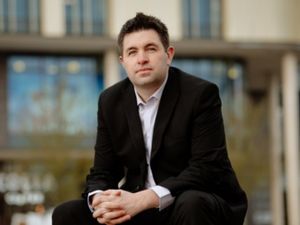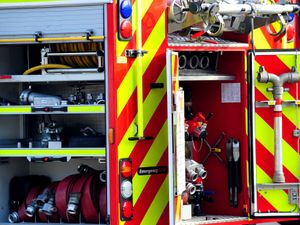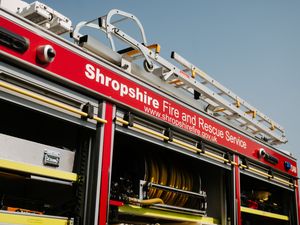Wartime secrets of old rectory
It's over 60 years since a Shropshire rectory enjoyed its finest hour as a top secret wartime eavesdropping post linked to the famous Station X at Bletchley Park - but even today people who worked there are reluctant to talk.
It's over 60 years since a Shropshire rectory enjoyed its finest hour as a top secret wartime eavesdropping post linked to the famous Station X at Bletchley Park - but even today people who worked there are reluctant to talk.
But the fascinating story of the Old Rectory in Whitchurch, a Second World War "Y" station, is told in a new book which not only looks at its wartime role, but its history generally.
"Whitchurch was intercepting the secret coded messages transmitted by the Germans using their Enigma machines, and then relaying the messages, still coded, directly to Bletchley, where they were decoded and analysed. So it did play a very important part during the war," said Mrs Madge Moran, who has written the book along with Jean North and Joan Barton.
"All this was of course secret, and it really is amazing the sort of air of secrecy that still surrounds the place. We have contacted, not many, but a few, people who actually worked there and knew what was going on and, you know, they're still very reluctant to talk, even though all these years have gone by and the Official Secrets Act means nothing as far as that building is concerned.
"There is plenty of evidence left in the house as to how it was used in the war."
To disguise the building's true purpose the rumour was put out, she said, that it was something to do with radar.
"Of course, it was nothing to do with radar at all."
Sadly, the future of the handsome building, which dates from 1749 and is on a site which can be traced back to the 10th century, is rather uncertain.
"It's been empty for a few years now. What will happen to it, we just don't know. The last owner of it has died and its future is uncertain. It's a bit of a worry what's going to happen to it. It's lovely, and of course it appears to be a bit isolated, but that's because an early bypass cut if off from the church.
"It would not be regarded as isolated at one time, and it's still partly surrounded by its moat."
The trio's studies began as a project with a class Mrs Moran was running at Whitchurch, sponsored by Keele University's extramural department. Jean and Joan were students in the class.
"It was a class that was involved with vernacular architecture, recording, measuring, drawing and researching the history of old houses in the area.
"We knew that the Old Rectory was an interesting house and that it must have a history, and so we started doing that. That was probably over 10 years ago. But at that time access was very difficult and it was a cold winter, and the house was cold, empty and abandoned, and I'm afraid we got sidetracked and went and did other houses where we were assured a warmer welcome, as it were.
"Then Keele axed the class, in 2003 I think. But off and on we had done so much work on the Old Rectory that the three of us thought that it would be a shame if it was wasted, and thought that we would try and finish the project by ourselves.
"That is really how the book came to be written.
"We found that it had a very interesting history, and had some very colourful rectors. One of them had five illegitimate daughters and was quite mad. And its finest hour, we think, was when it was used as an intercept station - a Y station - during the war, linked directly to Bletchley Park."
Mrs Moran added that the book was financed by the Owen Family Trust. Industrialist Sir Alfred Owen had left money for local projects benefiting, or of interest to, local people.
"Sir Alfred's daughter is Grace, who married David Jenkins, who was for 24 years the rector of Whitchurch. The trustees are Grace and her brother."
The book carries a dedication to David and Grace Jenkins.



